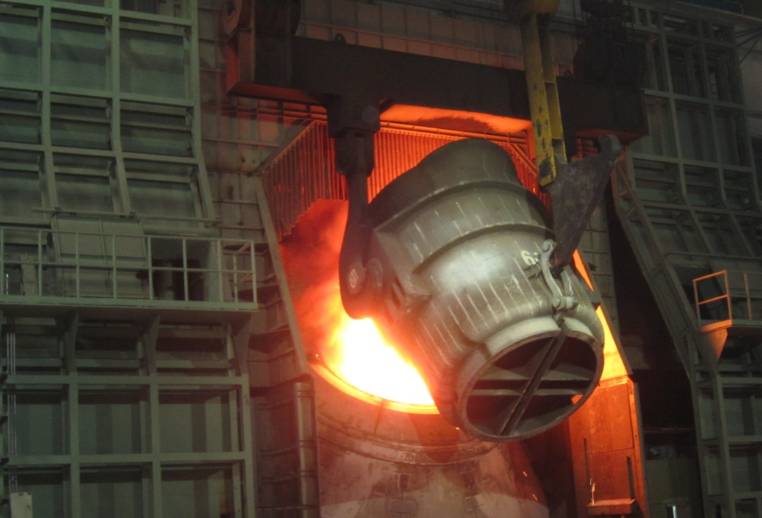A converter is a commonly used equipment for smelting steel. Its working principle is to put pig iron and scrap steel materials into the converter, and then convert them into qualified steel products through high-temperature oxidation reactions. The working principle of a converter can be divided into six main steps: loading, preheating, melting, desulfurization, alloying, and tapping. Below, we will provide a detailed introduction to the working principle of each step.

The first step is loading. Loading is the process of placing pig iron and scrap steel materials into the converter. Pig iron is produced by smelting in a blast furnace, which contains a large amount of iron and impurities. Scrap materials include scrap steel, scrap steel blocks, etc. These raw materials are mixed in a certain proportion and then loaded into the converter by a molten iron car or other means.
The second step is preheating. The purpose of preheating the converter is to increase the temperature of the converter and prepare for subsequent smelting. Preheating is generally achieved by burning coal gas or other fuels to generate high-temperature gas to raise the temperature inside the converter to approximately 1200 ° C or above.
The third step is melting. In the high-temperature converter, scrap steel and pig iron begin to melt and undergo oxidation reaction with oxygen. This step is called the fusion process of scrap steel and pig iron, with the aim of fully mixing and dissolving the scrap steel and pig iron, and conducting redox reactions. The high-temperature oxygen added to the converter oxidizes impurities in scrap steel and pig iron, forming oxides. The process of melting requires a large amount of heat, which is usually provided by gas combustion.
The fourth step is desulfurization. The purpose of desulfurization is to remove sulfur elements from scrap steel and pig iron in the converter. Sulfur can easily cause brittleness in steel products and have a negative impact on the performance of steel. During the desulfurization process, desulfurizers containing calcium oxide or alumina are generally added to the converter. These desulfurizers react with sulfur elements in scrap steel and pig iron to form sulfides, which are then removed from the steel.
The fifth step is alloy. During the converter smelting process, other alloying elements can also be added to give the steel specific chemical composition and properties. Common additives include ferroalloys, deoxidizers, deoxidizers, and alloying agents. The addition of these alloying agents can improve the strength, wear resistance, and toughness of steel.
The sixth step is steelmaking. After the completion of steelmaking and smelting, the molten steel is taken out of the converter by pouring it, and further processed into steel products. During the steelmaking process, attention should be paid to controlling the temperature and flow rate of the molten steel to ensure its quality.
Overall, the working principle of converter equipment is to melt, desulfurize, and alloy pig iron and scrap steel materials under the action of high temperature and oxygen, ultimately producing qualified steel products. These reaction processes require control of various parameters and conditions to ensure that the composition and properties of the steel meet the requirements. As an important smelting equipment, the converter plays an important role in the steel industry.

Customer service hotline
400-1760-789
Tangshan Bohai Metallurgical (Group) Co., Ltd., China
Address:No. 11 Kaisan Road, High tech Industrial Park, Tangshan City, Hebei Province, China
Postal Code: 063020
Contact number:+86-315-5923161/5923167
Fax:+86 315 5934590
Website:http://www.tsbyjt.com
E-mail: tsbhyj@126.com